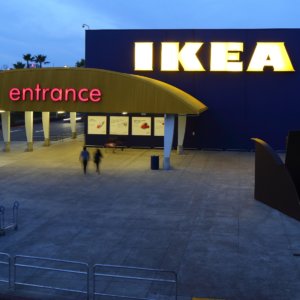The Experimental Roots of Revolutionary Vision
The history of the successful Swedish furniture retailer IKEA illustrates the role that adaptation and experimentation play in the development of an innovative strategy.
Topics
The story of the IKEA Group, the world’s largest furniture retailer, is well known. This highly successful company, based in Älmhult, Sweden, operates 220 stores in 33 countries and has annual sales of 14.8 billion. It has emerged as a global player in one of the most fragmented industries in the world. IKEA has been studied and used as an example by prominent business authors such as Michael Porter, Gary Hamel and Philip Kotler.1
In general, IKEA’s success is attributed to the fact that the company has redefined a number of organizational practices in the furniture business.2 Its use of global product sourcing and customer self-service results in low costs. IKEA has a tendency to choose the cheapest suppliers, and customers pick up, transport and assemble most furniture purchases from IKEA themselves. A portion of IKEA’s savings from low-cost components and customer self-service is then passed on to customers in the form of low prices. In addition, well-designed furniture and an unusual shopping experience result in consumers’ perceiving that they receive superior value for money spent. Although IKEA’s products are simple, most of them benefit from high-quality Scandinavian design. IKEA’s huge stores provide plenty of amenities as well, such as coffee shops, restaurants and even child-care facilities.
Although much has been written about IKEA, one topic has remained virtually unexplored. How did IKEA’s revolutionary strategy come about? While it is important for managers to study the content of successful strategies, it may be even more important to understand the process through which they are created.3 An in-depth examination of the history of IKEA, which was founded in 1943, reveals that many specifics of the company’s strategy were not brought about through a process of deliberate formulation followed by implementation. Instead IKEA’s founder, Ingvar Kamprad, started with a very general vision. IKEA’s specific strategy then emerged as he both proactively developed a viable course of action and reactively adapted to unfolding circumstances.4
In the academic literature, this approach is known as logical incrementalism.
References (15)
1. See M.E. Porter, “What Is Strategy?” Harvard Business Review 74 (November–December 1996): 61–78; G. Hamel, “Strategy as Revolution,” Harvard Business Review 74 (July–August 1996): 69–82; and P. Kotler, “Kotler on Marketing: How to Create, Win and Dominate Markets” (New York: Free Press, 1999).
2. R. Normann and R. Ramirez, “From Value Chain to Value Constellation: Designing Interactive Strategy,” Harvard Business Review 71 (July–August 1993): 65–77.





